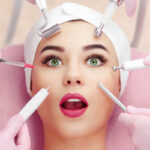THE WHAT? Ulta Beauty has cut its full-year forecasts, expecting fiscal 2024 net sales to range between $11.5 billion and $11.6 billion, down from the previous forecast of $11.7 billion to $11.8 billion. The beauty retailer also lowered its diluted earnings per share estimate to $25.20 to $26, from an earlier projection of $26.20 to $27.
THE DETAILS In the first quarter ended May 4, Ulta reported net sales of $2.7 billion, a 3.5% increase from $2.6 billion the previous year, but slightly below Wall Street’s forecast of $2.72 billion. Comparable sales grew by 1.6%, compared to nearly 10% growth in the same period last year. Net income was $313.1 million, or $6.47 per diluted share, surpassing forecasts of $6.25. CEO Dave Kimbell noted the prestige segment faced challenges due to increased distribution, timing shifts of product movements, and strong social media engagement in the prior year.
THE WHY? CEO Dave Kimbell attributed the forecast adjustment to the dynamics experienced in the first quarter, including a slowdown in the beauty category and heightened competition. Kimbell highlighted increased competitive pressure from Sephora’s partnership with Kohl’s and Amazon’s expansion into premium beauty brands. Ulta plans to address these challenges by focusing on strengthening its assortment, accelerating social relevance, enhancing the digital experience, leveraging the loyalty program, and evolving promotional strategies. More details will be shared during Ulta’s investor day in October.
Clinical aesthetics products refer to a category of products used in the field of medical aesthetics or cosmetic dermatology. These products are typically designed and formulated to be used under the supervision of healthcare professionals, such as dermatologists, plastic surgeons, or trained aestheticians. They are distinct from over-the-counter cosmetics in that they often contain active ingredients or formulations that require expertise in their application or administration.
Examples of clinical aesthetics products include:
-
Dermal Fillers: Injectable substances used to add volume, smooth wrinkles, and enhance facial contours. Examples include hyaluronic acid fillers like Juvederm and Restylane.
-
Botulinum Toxin (Botox): Injectables that temporarily paralyze facial muscles to reduce the appearance of wrinkles caused by repetitive movements, such as frown lines and crow's feet.
-
Chemical Peels: Solutions applied to the skin to exfoliate and improve its texture. They can treat acne, pigmentation issues, and signs of aging.
-
Laser and Light Therapies: Devices that emit focused light or laser energy to treat various skin conditions, including acne, scars, and signs of aging.
-
Prescription Skincare Products: Formulations containing active ingredients like retinoids (vitamin A derivatives), hydroquinone, or prescription-strength antioxidants to address specific skin concerns under medical supervision.




